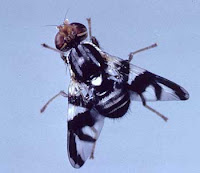 Seasonal Information. Apple trees are quite tolerant, withstanding most conditions, including wind and cold. It is recommended that bare root apple trees be planted in spring. Container trees can be planted in the spring through fall.
Seasonal Information. Apple trees are quite tolerant, withstanding most conditions, including wind and cold. It is recommended that bare root apple trees be planted in spring. Container trees can be planted in the spring through fall.
Location. Full sunlight and good air circulation are the most important concerns to think about when selecting your planting location. While apple trees can tolerate a wide range of soil types, they will not thrive in areas with poor drainage or high acid levels. Be sure to space your trees according to the size rootstock your tree has.
Pollination. Apple trees benefit greatly from cross-pollination, as they are not self-fertile trees. If you do not have a flowering crab apple tree within 50 feet of your apple tree location, you will need to plant at least one other variety that blooms at the same time as your apple tree nearby.
Planting Instructions. Begin by digging your planting hole the same size as the container of your tree. Set bare root trees on top of a small mound of soil in the middle of the hole. Spread the roots out evenly. If the roots have filled the container or are winding around, use your fingers to gently pull the roots apart a bit, or poke into the root ball with a pointed instrument and wiggle about a bit to loosen the roots and compacted soil.
The roots should be directed out and downward when you plant. The very top of the roots (crown of the plant) should be at or just below the soil surface when you are done planting. Keep the graft union 2" above the soil line. Fill the hole in with soil and pack firmly. Be sure to water the tree, as this will permit the roots to make good contact with the soil right away. Add a tree stake to maintain the proper growing angle the tree. For more detailed instructions, visit Fruit Tree Management: Planting Fruit Trees
Watering. Your apple tree will need to be watered regularly to make certain that the root system becomes well established. The soil surrounding your tree should be moist, but never saturated. Light green leaves can be a sign of over watering, while drooping leaves can be a sign of both over or under watering.
Fertilization. Add one cup of a good 10-10-10 or 13-13-13 fertilizer mixed thoroughly with the soil while planting your tree. Your apple tree will benefit from being fertilized annually with a 10-10-10 formula.
 Weed Control. Any weeds that are present around the area of your tree should be removed immediately. Insulate the tree with 3-4 inches of mulch, and be sure to replenish as needed.
Weed Control. Any weeds that are present around the area of your tree should be removed immediately. Insulate the tree with 3-4 inches of mulch, and be sure to replenish as needed.
Pests & Disease. The best defense is a healthy tree. Good soil, proper feeding and adequate water are vital to its prosperity. Consult The Orchard Keeper at Royal Oak Farm for proper pest and disease control for your tree
Pruning. Your apple tree will need very little pruning during its first year. In year two you can consult The Orchard Keeper at Royal Oak Farm for proper pruning techniques. Mature apple trees will require annual pruning.



 When monitoring AM traps, AM’s show a preference for golden delicious varieties, but no variety is immune from attack. Sticky red spheres are effective monitoring devices for adult AM flies (Fig.4). Females are attracted to the sphere for mating and egg laying activities and are trapped by the sticky coating. Hang traps shortly before expected adult emergence (mid to late June in upper Illinois). First emergence may be detected by checking traps daily until the first fly is spotted on the trap.
When monitoring AM traps, AM’s show a preference for golden delicious varieties, but no variety is immune from attack. Sticky red spheres are effective monitoring devices for adult AM flies (Fig.4). Females are attracted to the sphere for mating and egg laying activities and are trapped by the sticky coating. Hang traps shortly before expected adult emergence (mid to late June in upper Illinois). First emergence may be detected by checking traps daily until the first fly is spotted on the trap. An all natural approach is available in the form of Bonide’s Captain Jack’s Dead Bug Brew. Captain Jack's Deadbug Brew® contains Spinosad (spin-OH-sid), a product first isolated from a naturally occurring soil dwelling bacterium that was collected on a Caribbean island from an abandoned rum distillery. Deadbug Brew® kills bagworms, borers, beetles, caterpillars, codling moth, gypsy moth, loopers, leaf miners, spider mites, tent caterpillars, thrips and more! Use on fruits, vegetables, berries, citrus, grapes, nuts and ornamentals and approved for organic gardening.
An all natural approach is available in the form of Bonide’s Captain Jack’s Dead Bug Brew. Captain Jack's Deadbug Brew® contains Spinosad (spin-OH-sid), a product first isolated from a naturally occurring soil dwelling bacterium that was collected on a Caribbean island from an abandoned rum distillery. Deadbug Brew® kills bagworms, borers, beetles, caterpillars, codling moth, gypsy moth, loopers, leaf miners, spider mites, tent caterpillars, thrips and more! Use on fruits, vegetables, berries, citrus, grapes, nuts and ornamentals and approved for organic gardening.








 Seasonal Information. Apple trees are quite tolerant, withstanding most conditions, including wind and cold. It is recommended that bare root apple trees be planted in spring. Container trees can be planted in the spring through fall.
Seasonal Information. Apple trees are quite tolerant, withstanding most conditions, including wind and cold. It is recommended that bare root apple trees be planted in spring. Container trees can be planted in the spring through fall. 
